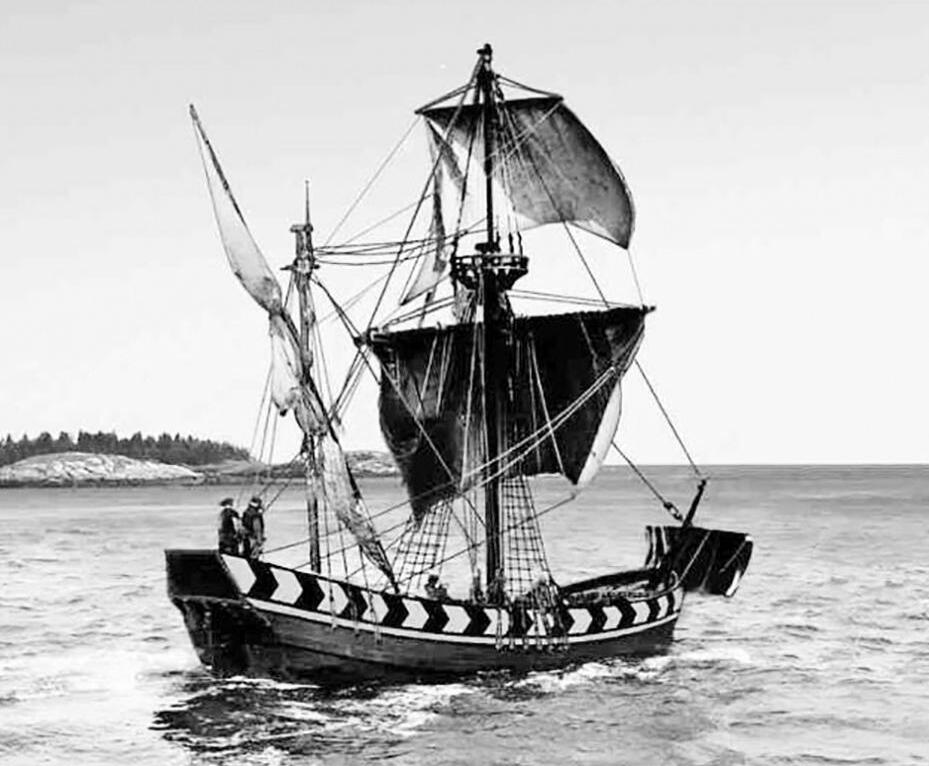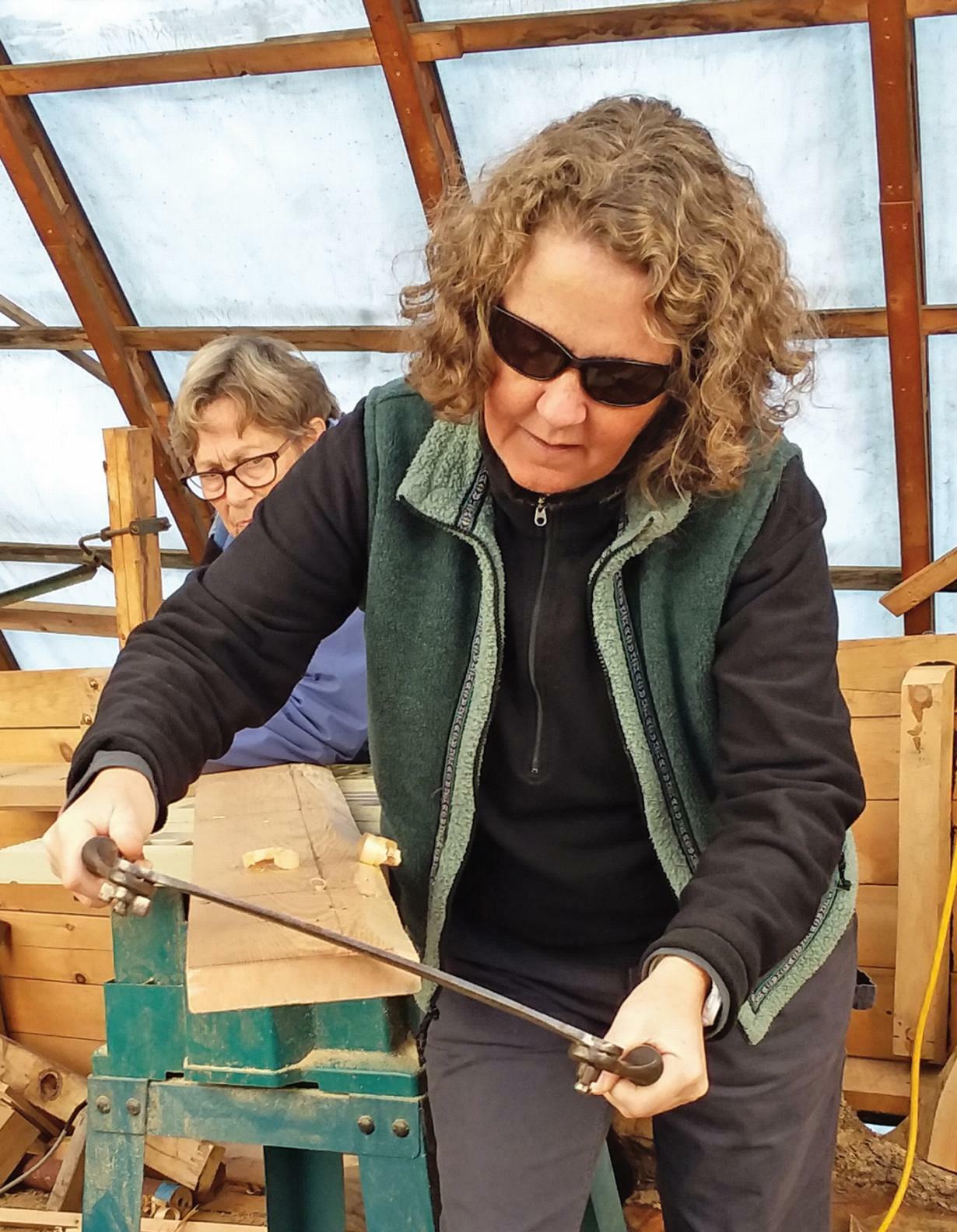
9 minute read
Transition Time for Maine's First Ship
With Launch Day looming after ten long years, MFS has hired its first Executive Director to take the Bath-based non-profit to the next level
Orman Hines, President of Maine’s First Ship, spoke to Marlinspike recently about making the transition from a decadelong build to actively operating their new ship. keel… but the only person who actually gets paid has been the caulker.
Advertisement
Marlinspike: We’ve been publishing the magazine for eight years now, and we’ve seen several new ships get launched and come online. I’ve noticed some organizations struggled with the transition from the building phase to the operating phase.
Orman Hines: Yeah. Well, we’re probably in that boat, I would guess.
MS: How long has it been since the keel was laid?
OH: It’s been 10 years. 2011.
MS: So you’ve already had plenty of opportunities for leadership roles to evolve, and for key people to slip in and slip out of your build phase.
OH: Yes. We’ve been pretty lucky. We’ve had some great volunteers. Rob Stevens is our master shipwright. So we’ve got a good cadre on the vessel build, and a couple of vice presidents that do a lot. We only have one part-time staffer in the office. Really, the board picks up a lot of the work.
MS: Is anyone getting paid, besides that part-time staffer?
OH: The Coast Guard asked us to hire the caulker; the caulker is basically the only person that’s being paid in the build stage. And we’ve purchased some things, like the lead
MS: When you’re building a boat, it’s an easy sell when you’re talking to donors, when you’re recruiting volunteers — it’s an exciting thing to be involved in. But when the boat is finished and you transition to operations, and to maintenance of the vessel that you built, it’s a little more difficult sell. There’s not as much sizzle. Are you noticing that?
OH: I hear that from various people, but you know what? I hear it the other way, too. But we’re right just north of the bridge in Bath, Maine. We’ve got a pretty nice site there, right on the Kennebec River. We’ve got pretty good visibility. We’re hoping we’re going to draw people. Bath is becoming more of a tourist area. The Maine Maritime Museum, they draw a lot of people.
MS: You plan to operate from the freight shed location, right? Just north of the bridge.
OH: Yep. We’re building a dock, and we’re just waiting for the ramp, actually. It’s hard to get the aluminum for the ramp. So the dock is all built. And we’ll probably keep her on the dock until we finish the rigging and all the safety stuff we’ve got to get onto her over the next year.
Our plan is we’re launching June 24th of next summer. Then we’ll be rigging for three to six months, and then we’ll be looking for our captain and probably won’t actually sail it for at least six months or more.
MS: You mentioned tourism, so I assume that you are looking at public sails as a way to generate revenues. Have you thought about the business plan in broad strokes? You’ve committed to a salary of $50,000-$65,000 for your Executive Director, which is money you’re going to have to come up with somewhere, right?
OH: We figured we’d get the money for the Executive Director all right. It’s hiring a captain and some of the other things we’d like to do. Phase it in over the next three or four years. We’re actively working on different educational aspects. And we just formed a group the other day in the education committee to look into different methods we can use onboard the ship, like, say, using sea shanties, haul up the sails — working with young people. We have a few good ideas already.
MS: Have you developed any partnerships with public or private schools in the area that might lead to regular programs?
OH: We’ve worked a little bit with a couple schools. There’s one called Chewonki, a top-notch school we’d like to do more with, and we’ve had students from a private school in Bath. And the local high school, Morris High School, and the different grade schools in the area. They bring students in. Of course with COVID, we had to cut back a little bit on that.
MS: I notice the number one responsibility that you listed when you posted your Executive Director job was development.
OH: Yeah, I think that’s usually the case for the executive director, they need to have some expertise in fundraising. That will take a little bit of the load off of some of the board members.

MFS volunteers fit the garboard back in 2014
MS: Even more so these days, with this unpredictable pandemic. If revenue from operations is unpredictable, then revenue from fundraising becomes even more important than ever.
OH: Yeah. We haven’t had our annual dinner last two years, and we usually have a dinner or two in the summer, and we haven’t done any of that. But the fundraising in general — as far as our capital campaigns and annual fundraising go — that has been pretty good, actually.
MS: Can people sense the finish line now with Virginia?
OH: The end of the build, at least, yeah.
MS: And it really looks like something now.
OH: Oh, it certainly does. Awes people a little bit, when they come in.
MS: How do people respond to that bust of Rob Stevens on top of the knighthead?
OH: [Laughs] They love it. Maybe we should turn it around so people can see it a little better, but people are pretty awed by it. Rob says it hasn’t got a big enough nose.
MS: It sounds like you are still in early stages of developing your business plan — you mean to let your new executive director take the lead with that. Tell us a little about Kirstie Truluck.
OH: Well, she’s a local, she’s been associated with a high school and local education and one of the big-time camps up here in Maine. And she’s sailed on schooners down to Camden. And she likes working the outdoors. We feel pretty lucky to have her.
MS: Her education background — does that reflect the board’s interest in developing relationships with local schools? Will that be the centerpiece of the business plan going forward?
OH: Well, that’s one of the things we’re looking for, that and the fact that she has some expertise and done some fundraising with the camp. Fundraising was always an attribute we wanted in our Executive Director. So she’ll bring some new ideas to us, and help us move forward.
MS: Would it be fair to say that your volunteer base, and your donor base, are right there in Maine?
OH: Pretty much true, but we potentially get a lot of summer visitors. Some are from all over the country, and so we do have quite a few people, particularly down in Jamestown or Virginia area where the captain, James Davies, had a big plantation right at the mouth of James River. So we do have supporters from all over the country. A lot of people come to Maine for vacation, they have summer homes here, whatnot. They live other places.
MS: Looking at the Kennebec River as a location for public sails, I have to ask you about the Mary E.
OH: We don’t know exactly what happened to the Mary E... and I’m not conversant on what they were doing as far as sailing it, how often they sailed. It was kind of sporadic the first year, but this year it seemed to be going along pretty good, until the accident. Everybody says that it was a microburst, that’s all I’ve heard.

Kirstie Truluck became MFS’s first Executive Director in December
MS: Do you have any concerns about operating public sails in a bluff, old-fashioned boat like Virginia on a tidal river? Between the bridge, and the current, and the tendency, I’m guessing, of the wind to blow either up or down the river..?
OH: Yeah, with the current and everything, it’s always tricky. I haven’t personally had a boat on the river. My father kept one on the river there, and I know that it’s tricky coming in to the docks and along the river there. We’ll need somebody who knows their way around the river a little bit, because there’s plenty of ledges and tricky spots in the river. We hope to actually put an electric motor in it at some point to be a good kicker to have going when maneuvering very tight places.
MS: Absolutely. Your captains are going to need some horsepower.
OH: Well, we got the diesel engine, and we’re hooking that up. It’s a 175 horsepower V drive, which give us enough to overcome the tide and a little bit of a wind. It’s going to be interesting learning how to do that, I think. Any captain will need some good training and experience.
MS: Speaking of other new boats that have gone through this transition, the Matthew Turner out in Sausalito went with a diesel/electric hybrid propulsion system. That sounded very appealing to me, until I found out that they had spent about a million bucks on it.
OH: We looked at it a little bit and it was kind of high priced. How much did you say, a million bucks? I don’t think it was quite that, but it was a little out of our reach when we looked at it.
Our naval architect, David Wyman, thinks we should go with a dual electric motor on... I don’t know exactly how he plans on hooking it up on either side of the shaft. He thought that would be the way to go. We’ve got to respect him, he’s done a great job for us.
MS: What does your winter look like and the spring leading up to your launch in June?
OH: Well, finishing up on a new business plan, and how they’re all going to fit together. That’s going to keep us pretty busy.
And we were also purchasing the building. We’re trying to keep that on the quiet side right now. We just got the purchase and sale agreement written up. It’s going to be an ideal spot for us. We want to make it our home, but it’s not cheap process, purchasing any waterfront! ❂
Maine’s First Ship is building a reconstruction of the 1607 pinnace Virginia, the first English ocean-going vessel built in the Americas. Learn more at mfship.org




